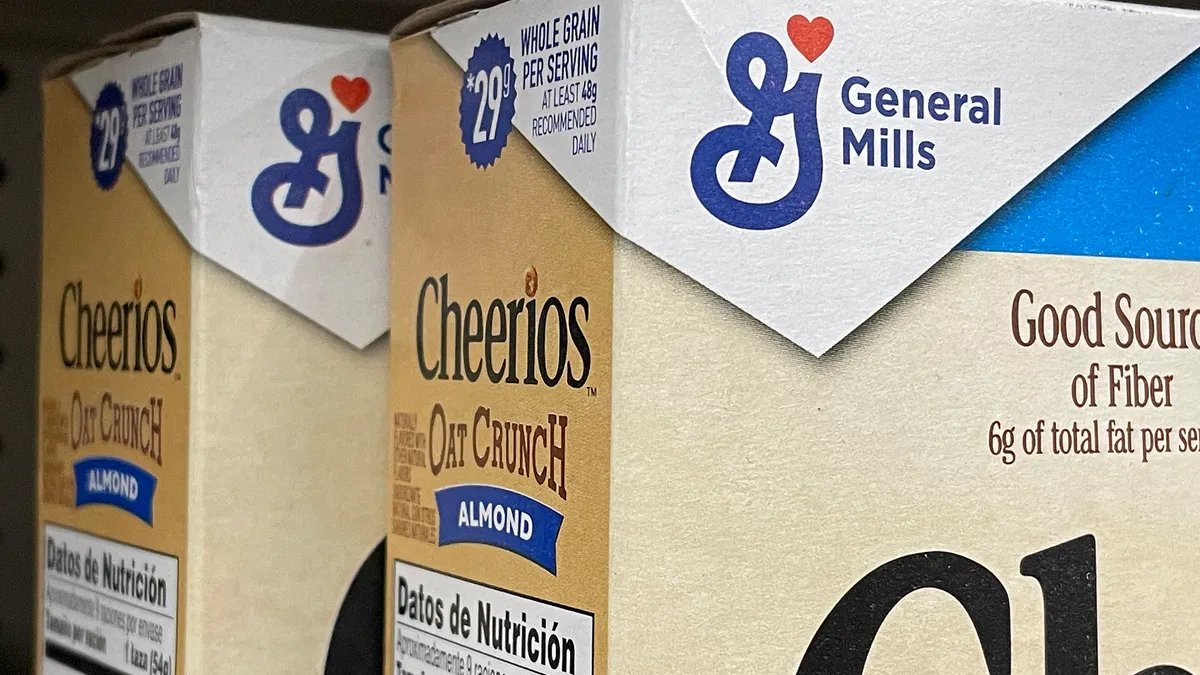General Mills has faced no shortage of supply chain disruptions in recent years: commodity inflation, war in one of the world’s largest grain-producing regions, labor shortages, freight and port snarls, and all the various effects of the pandemic.
But the packaged food giant was already building resilience into its supply chain before those events. “The nature of supply chain is always you're dealing with complexities,” Paul Gallagher, General Mills’ chief supply chain officer, said in an interview. “You're always dealing with some kind of disruption, whether that's disruption that you create from within in order to drive a different proposition, or disruption that's external.”
In other words, stuff happens. But resilient supply chains can react quickly.
Gallagher joined the company in 2019 as VP of its North America supply chain, where he was tasked with transforming its supply chain network to drive competitive advantage for the business.
He says the company began digitizing before the pandemic and doubled down during the COVID-19 crisis “to ensure that we were driving value and visibility to all the disruptions.”
The company’s effort to digitally connect its supply chain starts with sourcing. The resulting data of that linking “give[s] us visibility of potential risk and opportunity, whether that be weather patterns, or whether that be supplier disruptions or demand on suppliers, or what happened recently with the Suez Canal,” Gallagher said.
He added, “We now are so connected in understanding that it's not requiring an individual to go off and find the information — the information is already available, and it's prompting us with optionality around what to do.”
To achieve end-to-end visibility and analysis, the company has built a digital twin of its supply chain that runs on an advanced analytics and artificial intelligence platform, which General Mills is building with software firm Palantir.
“It's new to us, especially in the in the food industry,” Gallagher said. “Principally, it allows us to take multiple inputs and insights every day on that intelligent execution platform, and it consumes real-time data.”
Looking at just the company’s North American dry foods business, the system takes over 3,000 orders, assesses them overnight, automatically makes recommendations to an “already optimized plan,” and then produces 500 recommendations depending on variable inputs. All of that digital work helps automate certain supply chain planning functions and helps teams “make more learned and insightful decisions and trade-offs,” Gallagher said.
Along with visibility, these investments hold the potential to ramp up productivity. “What used to take a day to do is now taking us minutes,” Gallagher said. With those gains, General Mills is eyeing expanded margins. It also aims to free up supply chain staff to work more closely with customers on longer-term opportunities and so they are not “caught in the tyranny of the urgent,” Gallagher said.
As well as cutting back costs, visibility and analytics can help General Mills reduce its overall climate and sustainability footprint.
“We always had the ability to track” emissions in the supply chain, Gallagher noted. “But it required somebody to go in and assess it all. We now see it as it happens, and it's captured as it happens. So we've moved from episodic to actually dynamic.”














